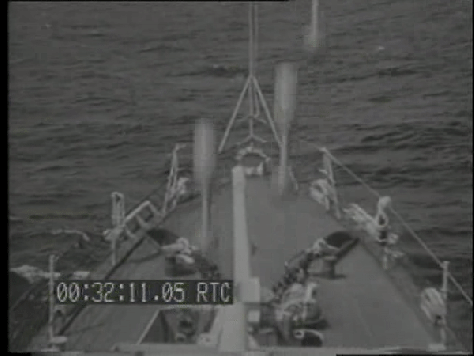By Rachel Hoyle
I have enjoyed nearly every single aspect of my internship this semester at the Shirley-Eustis House in Roxbury. My duties have led me to a much deeper understanding of how museums operate, from the mundane – hanging Christmas lights for an evening event – to the glamorous preparation of the house for use as a backdrop in multiple documentaries. The site’s Executive Director, Suzy Buchanan, has been gracious enough to let me trail behind her on Fridays, learning exactly how she does what she does.
However, when I use the word “nearly,” there is one particular aspect of my internship that has led to frustration: the lack of original sources to catalog for my developing web exhibit. Given that my exhibit will focus on enslaved Africans at the house, most of whom do not even have their names written in the historical record, it is not surprising that no artifacts of their existence have survived the past three hundred years. Add to that injustice the constantly changing structure and use of the Shirley-Eustis House (at one point it was even used as a “home for wayward girls”), and it is a recipe for the reproduction rather than the display of original artifacts.

It is not as if I am the first person studying African enslavement to encounter this problem. The staff at the National Museum of African American History and Culture (NMAAHC), when collecting the first artifacts for display in the museum, ventured around the nation to track down relevant objects. Physical artifacts of African American history had often been either lost, passed around to various families, or stored in people’s attics for generations.[1] It was not negligence keeping these items stowed away – it was an instinct of preservation. Many African Americans certainly knew the value of these artifacts. Rex Ellis, Associate Director of Curatorial Affairs at the NMAAHC, recalled the moment he first came face to face with the Bible of infamous Black slave revolt leader Nat Turner. The woman who gifted it to the NMAAHC from its longtime place in her family’s Virginia home remarked that “It was time for it to leave here…because there’s so much blood on it.”[2] It was not until the NMAAHC’s founding that many of these artifacts were seen outside the confines of a single family or community, because there were few museums and historic sites willing or able to display them with a mindful acknowledgement of the artifacts’ troublesome and sometimes disturbing histories.

Once it was clear that there would be a NMAAHC, Founding Director Lonnie Bunch began a groundbreaking campaign to collect these artifacts. Under his “Saving African American Treasures” initiative, Bunch deployed conservationists and other museum professionals around the United States in an effort to identify and save artifacts protected and preserved by generations of Black families. This campaign unearthed tens of thousands of artifacts for the NMAAHC; most were free-will donations made by people who decided their personal collections were finally able to be seen and respected in the manner they necessitated.[3] This distinction between a lack of material culture and a preservation of the very same culture is essential. How many other artifacts are still hidden in an attic, trunk, or basement because museums and historic sites have not been ready to display them respectfully? How many of those relate to the experiences of enslaved Africans?
These stories shaped my thinking as I considered the use of artifacts in my exhibit. Unfortunately, I did not have the time or resources that Bunch and the NMAAHC had to track down material culture relating directly to the house or its enslaved occupants. While there are surviving manuscripts and records of Black occupants of the Shirley-Eustis House, written documents alone do not hold the same meanings or have the same impact as three dimensional artifacts in an exhibition. These documents are most often from the perspective of white, wealthy colonists, while physical artifacts were used directly by enslaved people. The history documents and objects carry is the same, but the perspectives they offer on that history are vastly different. Even neighborhood oral histories, which provide us with engaging ideas of how the house’s story has evolved over time and connect us to individuals’ experiences and stories, have a different impact on visitors than material culture.
It was Suzy Buchanan, the house’s Executive Director, who inspired my ideas for how we might incorporate artifacts into an exhibition on the site’s African American histories. She first mentioned that a large iron washing kettle sat in the basement of the Shirley-Eustis House, right in front of the public restrooms. While it was not original to the house, she qualified, it could at least serve to illustrate some of the work likely performed by enslaved people in the eighteenth century. If that was reasonable, she said, I could include it in my exhibit. I could hardly contain my excitement. There was one part of my problem rather expertly solved.
Immediately I realized that the Shirley-Eustis House also had an unexpectedly large collection of eighteenth and nineteenth century historical tools and gardening equipment in the attic of our carriage house. While we may not have been able to tell the stories of those enslaved at the house directly through surviving artifacts, we could still use items in our collection to interpret their lives. It is important to note that there are limitations to using nineteenth century artifacts to interpret eighteenth century events – much changed over that century regarding labor and enslavement. Interpreting these artifacts is still worthwhile, even if I acknowledge their weaknesses in my interpretation. In this concrete experience, I realized the importance of a detailed and up to date collections catalogue and the interpretive possibilities that can result.


Suzy also reminded me that we at the Shirley-Eustis House are not isolated from other museums. One benefit of designing an online exhibit is the potential to use collections beyond your own by linking other sites’ collections into the digital exhibit. Considering this option helped me realize that creating a rich and informative site on the history of enslavement is my priority for this exhibit, not simply drawing visitors to the Shirley-Eustis House and its unique resources alone. If our exhibit leads visitors to another site with more relevant artifacts, then I have done my job well.
The dispersion of artifacts from the Shirley-Eustis House likely occurred due to changing ownership, renovation, and repeated episodes of the house’s disrepair. It may be impossible to know what became of the site’s original eighteenth century artifacts, but this does not render its staff incapable of interpreting a broader history of the house and its residents, including its laborers. I hope that my exhibit does justice to the lives of enslaved Africans and their roles in local and national histories.
[1] https://sah.columbia.edu/content/prizes/tony-horwitz-prize/2021-lonnie-g-bunch-iii
[2] Vinson Cunningham, “Making a Home for Black History,” The New Yorker, https://www.newyorker.com/magazine/2016/08/29/analyzing-the-national-museum-of-african-american-history-and-culture.
[3] Vinson Cunningham, “Making a Home for Black History.”































